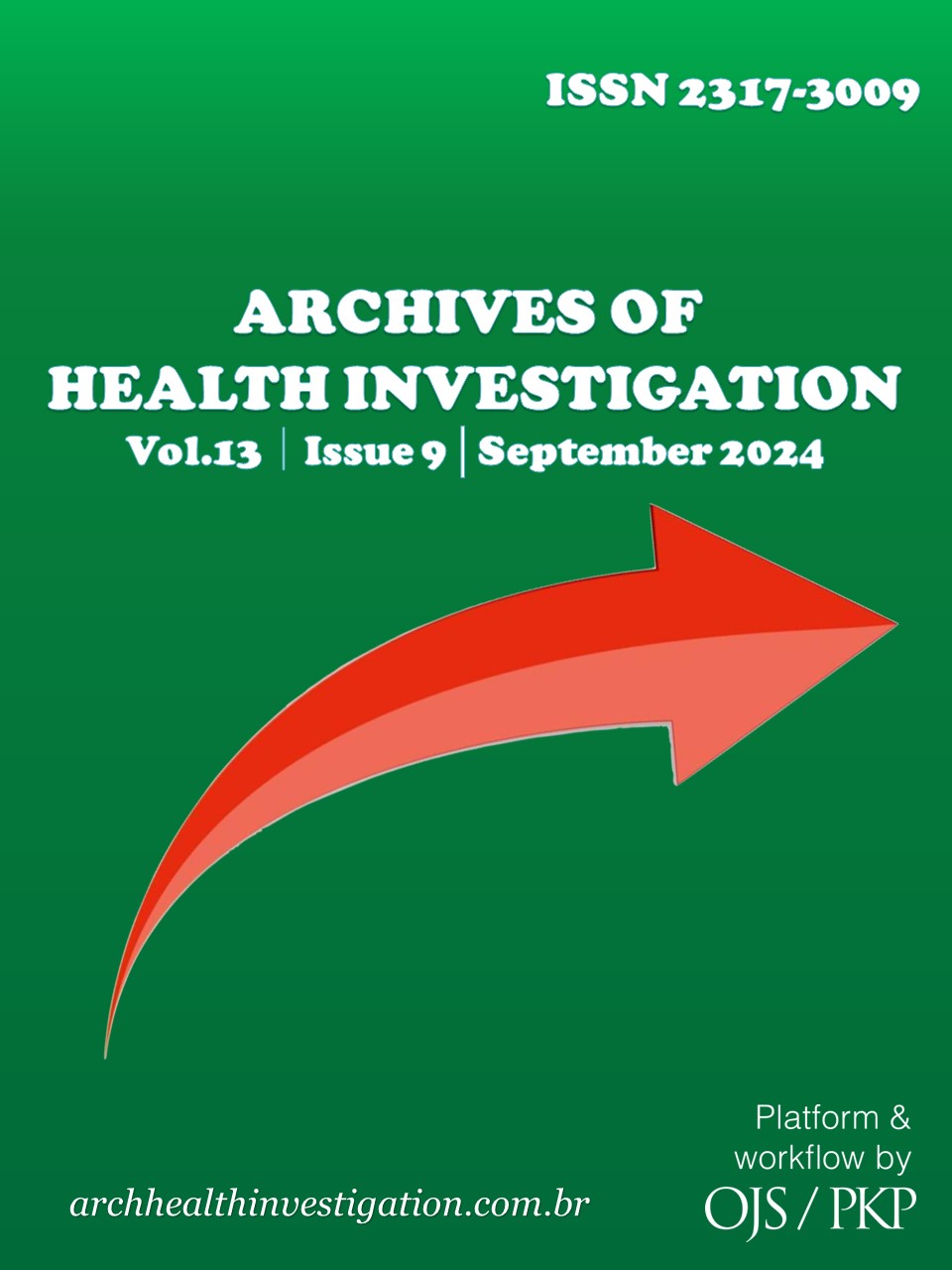Are Open Access Text Analysis Tools Capable of Identifying Writing by Generative Intelligence in Artificial Intelligence Manuscripts in Cephalometry?
DOI:
https://doi.org/10.21270/archi.v13i9.6429Keywords:
Artificial Intelligence, Cephalometry, Plagiarism, Diagnostic ImagingAbstract
Introduction: Due to the rapid development of generative artificial intelligence, it is necessary to study the possibility of detecting this type of writing. For this purpose, there are tools for detecting generative writing, which read documents and seek to identify patterns of writing related to generative artificial intelligence. Objective: To assess the capability of freely accessible text analysis tools to identify generative artificial intelligence writing in manuscripts on artificial intelligence in cephalometrics. Materials and methods: To address the question "Can freely accessible text analysis tools identify generative writing in manuscripts on artificial intelligence in cephalometrics?", a search was conducted on the Pubmed research platform using the PICOS strategy. A total of 62 manuscripts were selected. The analysis of generative writing was evaluated using two freely accessible generative writing detection tools: ZeroGPT and contentdetector.ai. Results were tabulated in a spreadsheet and analyzed using IBM SPSS statistical software. Results: In the analysis of different detection tools, there were no statistically significant differences between different years. However, there was a statistically significant difference when comparing the two detection tools, with average detection percentages higher than 26% for the ContentDetector.AI tool. Conclusion: The detection tools used were not able to correctly detect or agree on the use of generative intelligence in manuscript writing.
Downloads
References
Kunz F, Stellzig-Eisenhauer A, Zeman F, Boldt J. Artificial intelligence in orthodontics. Journal of Orofacial Orthopedics / Fortschritte der Kieferorthopädie, 2019; 81(1):52–68.
Schwendicke F, Samek W, Krois J. Artificial Intelligence in Dentistry: Chances and Challenges. J Dent Res. 2020;99(7):769-74.
Khanagar SB, Al-Ehaideb A, Maganur PC, Vishwanathaiah S, Patil S, Baeshen HA et al.. Developments, application, and performance of artificial intelligence in dentistry - A systematic review. J Dent Sci. 2021;16(1):508-22.
Takeshita WM, Silva TP, de Souza LLT, Tenorio JM. State of the art and prospects for artificial intelligence in orthognathic surgery: A systematic review with meta-analysis. J Stomatol Oral Maxillofac Surg. 2024;125(6):101787.
Kim J, Kim I, Kim YJ, Kim M, Cho JH, Hong M et al. Accuracy of automated identification of lateral cephalometric landmarks using cascade convolutional neural networks on lateral cephalograms from nationwide multi-centres. Orthod Craniofac Res. 2021;24 Suppl 2:59-67.
Hwang HW, Moon JH, Kim MG, Donatelli RE, Lee SJ. Evaluation of automated cephalometric analysis based on the latest deep learning method. Angle Orthod, 2021;91(3):329-35,
Silva TP, Hughes MM, Menezes LDS, de Melo MFB, Freitas PHL, Takeshita WM. Artificial intelligence-based cephalometric landmark annotation and measurements according to Arnett's analysis: can we trust a bot to do that? Dentomaxillofac Radiol. 2022;51(6):20200548,
Menezes LDS, Silva TP, Lima Dos Santos MA, Hughes MM, Mariano Souza SDR, Leite Ribeiro PM et al.. Assessment of landmark detection in cephalometric radiographs with different conditions of brightness and contrast using the an artificial intelligence software. Dentomaxillofac Radiol. 2023;52(8):20230065.
Leonardi R, Giordano D, Maiorana F, Spampinato C. Automatic cephalometric analysis. Angle Orthod. 2008;78(1):145-51.
Montúfar J, Romero M, Scougall-Vilchis RJ. Automatic 3-dimensional cephalometric landmarking based on active shape models in related projections. Am J Orthod Dentofacial Orthop. 2018;153(3):449-58.
Santana LADM, Santos HTD, Gonçalo RIC, de Oliveira Costa CS, Barbosa BF, Alves ÊVM et al. Combining ChatGPT and machine learning: A viable alternative for discussion in oral medicine. Oral Dis. 2024;30(5):3521-522.
Maroteau G, An JS, Murgier J, Hulet C, Ollivier M, Ferreira A. Evaluation of the impact of large language learning models on articles submitted to Orthopaedics & Traumatology: Surgery & Research (OTSR): A significant increase in the use of artificial intelligence in 2023. Orthop Traumatol Surg Res. 2023;109(8):103720.
Santana LADM, Gonçalo RIC, Floresta LG, de Oliveira EM, Trindade LMDF, Borges LP et al. Integrating ChatGPT in oral cytopathology: Enhancing fine needle aspiration diagnostic accuracy for malignant lesions. Oral Oncol. 2024;150:106685.
Silva TP, Ocampo TSC, Alencar-Palha C, Oliveira-Santos C, Takeshita WM, Oliveira ML. ChatGPT: a tool for scientific writing or a threat to integrity? Br J Radiol. 2023;96(1152):20230430,
1Bisi T, Risser A, Clavert P, Migaud H, Dartus J. What is the rate of text generated by artificial intelligence over a year of publication in Orthopedics & Traumatology: Surgery & Research? Analysis of 425 articles before versus after the launch of ChatGPT in November 2022. Orthop Traumatol Surg Res. 2023;109(8):103694.
Buchanan J, Hill S, Shapoval O. ChatGPT Hallucinates Non-existent Citations: Evidence from Economics. Am Econ. 2023;69(1):80-7.
Bellini V, Semeraro F, Montomoli J, Cascella M, Bignami E. Between human and AI: assessing the reliability of AI text detection tools. Curr Med Res Opin. 2024;40(3):353-58.
Walters, William H. The Effectiveness of Software Designed to Detect AI-Generated Writing: A Comparison of 16 AI Text Detectors. Open Inform Sci. 2023 7(1)7: 20220158.


